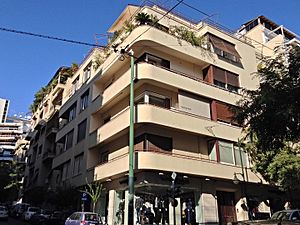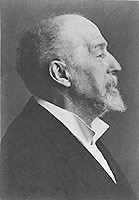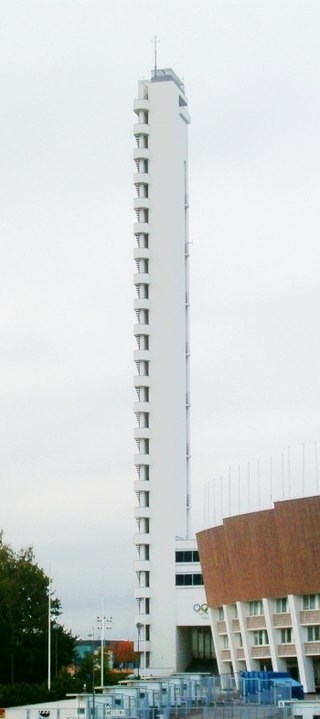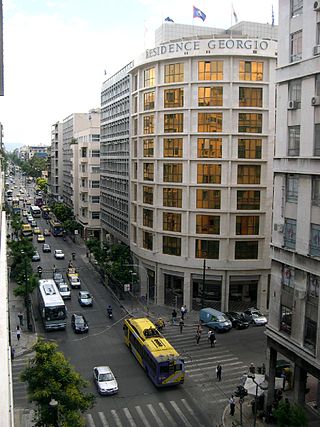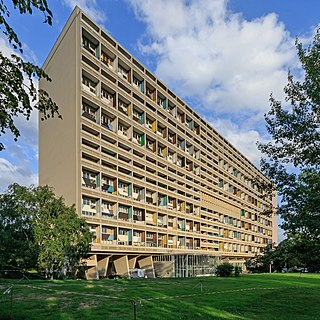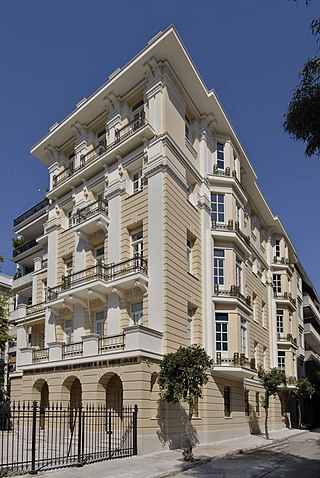Prelude
The polykatoikía (condominium)

The term πολυκατοικία (polykatoikia, literally "multiresidence") is used in Greek to denote every apartment building. One of the first, if not the first, apartment buildings in Athens was built in 1918–1919 by architect Alexandros Metaxas in an eclectic style for Petros Giannaros on Philellinon and Othonos Streets, adjacently to Syntagma Square. Thanks to the fact that this building was one of the first ones to be built with reinforced concrete, it was unexpectedly, as well as asymmetrically higher than the adjacent ones. This led to a furious reaction and two royal decrees, one in 1919 and another in 1922, which set the height for buildings according to the width of the street they lay on, with a maximum height of 26 metres for wide streets. [1] [2] [3]
The changes that took place in Greek society after the defeat of Greece during the Greco-Turkish War of 1919–1922, and the ensuing population exchange between Greece and Turkey created different housing needs for the population, revealed how important the construction sector could be for the Greek economy, and influenced, as a result, the legal framework of the polykatoikia.
In 1929, two important laws concerning apartment buildings took effect. [1] The law about "horizontal property" (οριζόντια ιδιοκτησία) made it possible that many different owners own one apartment building, each by owning one or more apartment units. Theoretically, each apartment corresponds to a percentage of the original plot. The most important effect of this law was the practice of "αντιπαροχή" ( antiparochì , literally "a supply in exchange"). With antiparochì, the owner of a plot, who can't afford to build an apartment building by himself, makes a contract with a construction company so that the latter will build the apartment building but keep the ownership of as many apartments as the contract states. Although during the interwar period the practice of antiparochì was limited, as the construction of most apartment buildings was financed solely by the original owners of the plot, antiparochì became the most common method for financing the construction of condominiums (polykatoikìes) from the 1950s onwards. [4]
Later in 1929 came into effect the first General Building Regulation. Most importantly, not only did it regulate the height and surface area of the buildings, but it also introduced innovations that their use came to characterize the modern style of the buildings of the era, such as the bay windows, or erkers (έρκερ), as they are known in Greek after the German term. [5]
Conservatism between 1900 and 1930

During the first two decades of the 20th century, Greek architecture failed to follow international trends, especially Art Nouveau and, to a lesser extent, Art Deco, or to produce an architectural style with consistent features that could act as a successor to Greek Neoclassicism. [7] As a result, buildings in Athens that can be characterized as 'Art Nouveau' are scarce. The tumultuous changes and poor economic state of the Greek society must be taken into account when studying this period. [8] Most architects of that period that built in Athens were conservative and late in adopting other non-classical European styles, often altering them and mingling them with classical motifs, creating thus an eclectic style. [9]
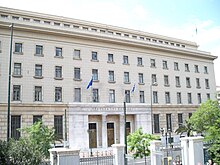
During the last part of this period and under the influence of Anastasios Metaxas's work (1862–1937), most public buildings were built in a so-called "simplified classical" style (αφαιρετικός κλασικισμός), similar to "stripped classicism". Such buildings include classical ornamentation albeit in a much lesser degree; [10] Art Deco ornamentation also becomes much more common. Such buildings, with their imposing façades, usually emit grandeur and austerity. The most important building of this style is the Bank of Greece on Panepistimiou Street built between 1933 and 1938 by a team of architects led by Nikolaos Zoumpoulidis, Kimon Laskaris, and Konstantinos Papadakis. Although it is relatively lightly decorated, every ornament is classical in style and its façade is even reminiscent of the Greek parliament, designed in 1834. [11] Other buildings are the Athens University of Economics and Business on Patision Street designed in 1926 by Anastasios Metaxas, [10] and the General Accounting Office of Greece on Panepistimiou Street designed in 1928 by Emmanouil Lazaridis which incorporates Art Deco elements. [12]






